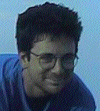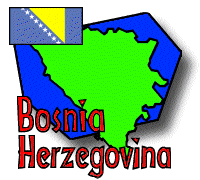Person of the Day: war refugees
- United Nations High Commissioner on Refugees (UNHCR)
- Palestinian Refugee ResearchNet
- Refuge! Amnesty International Campaign
- European Council on Refugees and Exiles (ECRE)
Place of the Day: Sarajevo
Tech Fact of the Day: acronyms
| UN: | United Nations | ||||||||
| SFOR: | Stabilization Force
| ||||||||
| NATO: | North Atlantic Treaty Organization | ||||||||
| EU: | European Union | ||||||||
| UNHCR: | United Nations High Commissioner on Refugees | ||||||||
| UNICEF: | United Nations Children's Fund | ||||||||
| USAID: | United States Agency for International Development | ||||||||
| OSCE: | Organization for Security and Cooperation in Europe | ||||||||
| IPTF: | International Police Task Force | ||||||||
| MP: | Military Police | ||||||||
| BiH: | Bosnu i Hercegovinu (Bosnia and Herzegovina) | ||||||||
| MAC: | Mine Action Center | ||||||||
| CRS: | Catholic Relief Services | ||||||||
Group Dispatch, April 15

Questions? Ask Ethan ![]() !
!
Return to Fast Facts
 |
 |
 |
 |
 |
|
Itinerary/ Journal |
Discussions |
About Bosnia |
eDscape Projects |
Scrapbook |
|
|
|
|
|
Copyright 1997-99 BikeAbout. All rights reserved.
